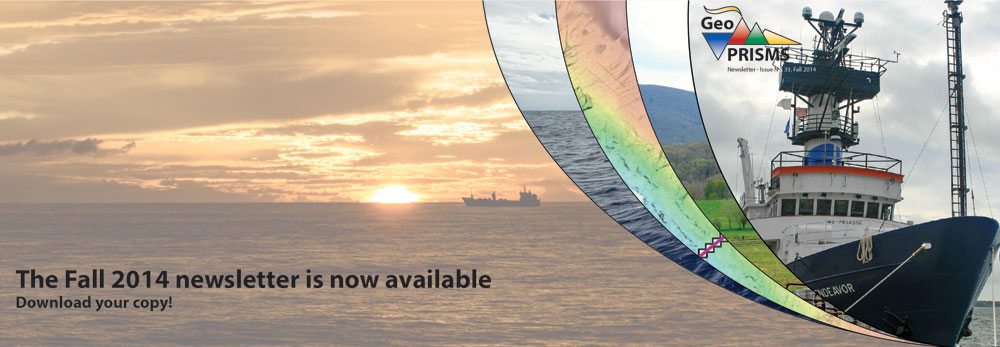1) NSF Program Director in the Marine Geology and Geophysics Program – Division of Ocean Sciences (OCE), Directorate for Geosciences (GEO) in Arlington, VA
2) Lecturer / Senior Lecturer Basin Studies and Petroleum Geoscience – University of Manchester, School of Earth, Atmospheric & Environmental Sciences
3) 8 MSc/PhD students and 2 postdoctoral fellows with MAGNET (Multidisciplinary Applied Geochemistry Network) a NSERC-funded program
———————————–
1) NSF Program Director in the Marine Geology and Geophysics Program – Division of Ocean Sciences (OCE), Directorate for Geosciences (GEO) in Arlington, VA
The NSF is seeking a qualified candidate to fill the position of Program Director in the Marine Geology and Geophysics Program in the Division of Ocean Sciences (OCE), Directorate for Geosciences (GEO) in Arlington, VA. The successful candidate will manage a portfolio of research in marine geophysics, including research relating to: the structure and tectonic evolution of the oceanic lithosphere and its associated volcanic, magmatic, hydrothermal, and earthquake activity; the tectonics and morphology of the seafloor and the geodynamic processes that create it; and subseafloor fluid flow that controls the exchange of heat and chemical species between seawater, abyssal ecosystems, and ocean crust and oversee. The individual selected for this position will also oversee NSF-funded marine geophysical infrastructure, coordinating closely as needed with the Division of Ocean Sciences facilities group on assets such as the Ocean Bottom Seismograph Instrument Pool, R/V Langseth, and marine geophysics data centers.
Specific details regarding the duties, qualifications, benefits and how to apply are found on the USAJOBS website (https://www.usajobs.gov/) .
Applicants wishing to apply for a Permanent Appointment should see Job Announcement OCE-2015-0002 (https://www.usajobs.gov/GetJob/ViewDetails/386691400)
Applicants wishing to apply for a Federal Temporary, IPA or VSEE Appointment should see Job Announcement OCE-2015-0003 (https://www.usajobs.gov/GetJob/ViewDetails/386690700)
Please contact Thomas Janecek (tjanecek@nsf.gov; 703-292-5393) for more details regarding this position.
———————————–
2) Lecturer/Senior Lecturer Basin Studies and Petroleum Geoscience – University of Manchester, School of Earth, Atmospheric & Environmental Sciences
Applications are invited for a post as Lecturer / Senior Lecturer. We are seeking a candidate with an internationally recognised research profile in an area relevant to Basin Studies and Petroleum Geoscience. Research themes of particular relevance include; rock physics, quantitative geophysics and seismic geomorphology, but outstanding candidates in all areas of Petroleum Geoscience are encouraged to apply. You will take a leading role in undertaking and developing research, joining one of the UK’s largest and expanding team of academics and researchers in Basin Studies, Petroleum Geoscience and Petroleum Engineering (funded by leading oil and gas companies and NERC/EPSERC grants). Our research is integrated across the University, with strong links to Chemical Engineering, Material Science and Computing. We also teach two flagship Petroleum Geoscience MScs (typically 80+ students in total) and the Petroleum Engineering Programmes (BEng / MEng, with 150+ students, jointly taught with Chemical Engineering). We have dedicated facilities, with well-equipped lecture rooms, the UKs leading petroleum geophysics computing suites, offering over 75 high performance workstations, with multi-terabyte dedicated storage, a new petro physical laboratory, plus access to world-class experimental facilities throughout the University.
You will be expected to have a strong track record in internationally recognised research and proven grant income. You will be able to deliver modules at masters and undergraduate level in Petroleum Geoscience and related topics, and develop and organise / participate on student field trips. You will also supervise students undertaking Masters and Doctoral research projects.
You should have a relevant PhD and/or have appropriate experience and a professional qualification. You should normally have teaching experience at University level and may have designed modules and assessment methods in their own specialism. Experience of the hydrocarbon industry would be an advantage.
Informal enquiries can be made to Professor Jonathan Redfern
Email: jonathan.redfern@manchester.ac.uk
The School of Earth, Atmospheric & Environmental Sciences (SEAES) is committed to promoting equality and diversity, including the Athena SWAN charter for promoting women’s careers in STEMM subjects (science, technology, engineering, mathematics and medicine) in higher education. We particularly welcome applications from women for this post. Appointment will always be made on merit. For further information, please visit http://www.seaes.manchester.ac.uk/about-us/athena-swan/
———————————–
3) 8 MSc/PhD students and 2 postdoctoral fellows with MAGNET (Multidisciplinary Applied Geochemistry Network) a NSERC-funded program
We are seeking up to 8 MSc/PhD students and 2 postdoctoral fellows to join our dynamic and rapidly growing network of leading scientists, industry partners and state-of-the-art analytical laboratories across Canada. The Multidisciplinary Applied Geochemistry Network (MAGNET) is an NSERC-funded industrial stream Collaborative Research and Training Experience (CREATE) program devoted to environmental, analytical and exploration geochemistry.
Current research project openings (beginning September 2015) include:
– Li isotopes in Cascades volcanoes
– Volcanologic, geochemical, and isotopic evolution of Medicine Lake volcano, California, USA
– The isotopic signal of dacite magmas triggering silicic supervolcanic eruptions
– Transitional metal stable isotopes in layered intrusions
– Sources of gas along the San Andreas fault, California, USA
View complete list with descriptions >> http://www.magnet.eos.ubc.ca/apply/current-opportunities-3/
Application instructions & deadlines >> http://www.magnet.eos.ubc.ca/apply/how-to-apply/
MAGNET’s intensive training program and cohesive learning environment, combined with industry internships, professional skills training and networking opportunities, offers trainees a significant competitive advantage.
Diane Hanano
MAGNET Program Coordinator
dhanano@eos.ubc.ca
www.magnet.eos.ubc.ca
———————————–
Please note, new job announcements (usually) will be distributed to the GeoPRISMS Listserv on the 1st and 15th of each month.


